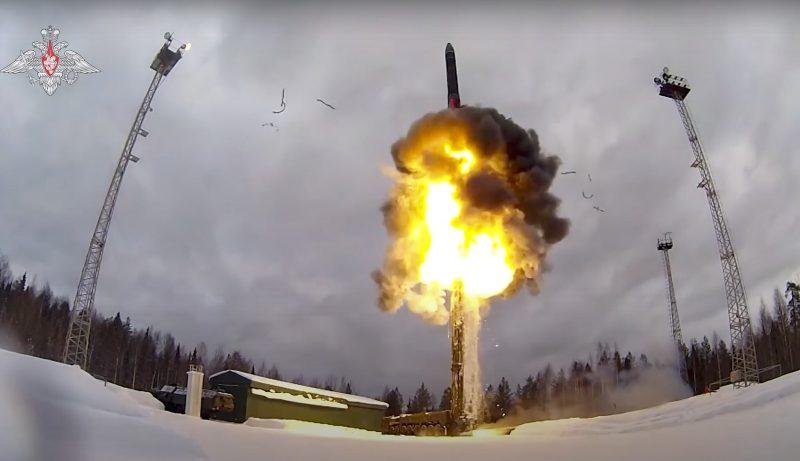After the Cuban missile crisis, both Americans and Soviets perceived the existential danger represented by the disproportionate nuclear arsenal held by the two superpowers, but also the colossal costs that this arms race engendered for the two countries. However, it took almost 7 years for the two countries to begin discussions on this subject. These will be conducted in Helsinki in November 1969, to give birth on May 26, 1972 to the first strategic arms regulation treaty, called Strategic Arms Limitation Talks, or SALT. This planned to freeze the number of ICBM ballistic missiles held by the two sides at their level on the date of signature, as well as the number of new SLBM strategic ballistic systems launched from submarines to a number not exceeding the number of ICBMs. The nature of this agreement led to a significant increase in the ballistic missile endowments of the two countries between 69 and 72, but also to the development of multiple re-entry vector technology, or MIRV, allowing several nuclear warheads to be carried on board. from a single missile.
A year later, Washington and Moscow began negotiations for a new treaty, SALT 2, to be signed in 1979, which marks the first agreement effectively limiting the number of independent vehicles, not missiles, to 2.250. , and the number of ballistic missiles Mirvés to 1350. Again, technical responses were undertaken to circumvent the limitations imposed by SALT II, in particular the development of long-range cruise missiles capable of carrying a nuclear warhead. Due to its low speed, and despite the power of the nuclear weapons on board, these missiles did not constitute a first-strike weapon, and therefore did not fall within the scope of the agreement. The Soviet intervention in Afghanistan and the Euromissile crisis suspended disarmament negotiations until the breakup of the Warsaw Pact bloc. This new treaty, initiated by Ronald Reagan, will be signed in 1991, and will be applied in 1994, and was designated START for Strategic Arms Reduction Treaty. It provided for the limitation of the total number of vectors to 5000 units, and the number of strategic ballistic missiles to 850 capable of carrying a maximum of 2500 warheads, while the number of strategic bombers were for the first time taken into consideration. In application of this treaty, Russian strategic nuclear capacities were divided by 3 and those of the United States by 2, for in the end a substantially equivalent number of nuclear warheads in service in the two countries.

START was replaced by the New START treaty in 2010, after an intermediate treaty, the Strategic Offensive Reduction Treaty, or SORT, was superimposed on it from 2003. SORT provided for a significant reduction in the number of nuclear warheads in service, to be reduced to 2200 units for each country, regardless of strategic or tactical weapon. It did not replace START but supplemented it, by imposing greater constraints. NEW Start, was signed in 2010 and entered service in 2011. Summarizing START and SORT, it imposed a limit on the number of missiles and bombers to 800, of which 700 were operational, and the number of warheads in service to 1550. The nuclear warheads in reserve were not considered by this treaty, knowing that the deadlines for building and equipping strategic vectors of these warheads exceeded by far the foreseeable perimeter of a nuclear conflict. In addition, numerous reciprocal cross-checking procedures were put in place, as well as procedures concerning the exercises and tests of armaments. Other agreements, such as the treaty on the limitation of intermediate-range weapons signed in 1988 by Washington and Moscow at the end of the Euromissile crisis, or the Open Skies treaty signed a year later, then completed the international legislative arsenal to manage the risk of a new nuclear arms race. Unfortunately, since that date, all these safeguards have been lifted, first in 2018 when Donald Trump announced the United States' exit from the INF treaty by pointing the development of the new 9M29 Novator missile, a year later by Vladimir Putin ending the Open Skies Treaty, and today, the Russian president having announced the suspension of Russia from the NEW Start treaty. However, although very worrying, the decision of the Russian leader is not surprising.

75% of this article remains to read,
Subscribe to access it!
The Classic subscriptions provide access to
articles in their full version, and without advertising,
from 6,90 €.
Newsletter subscription
Register for the Meta-Defense Newsletter to receive the
latest fashion articles daily or weekly


[…] […]
[…] two days ago, after Russian President Vladimir Putin announced the suspension of the New Start treaty, we wrote that this decision paved the way for a future ramp-up of the arsenal […]